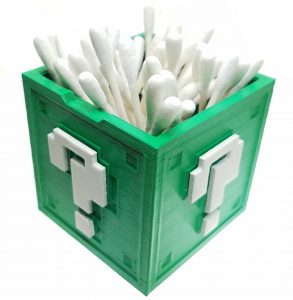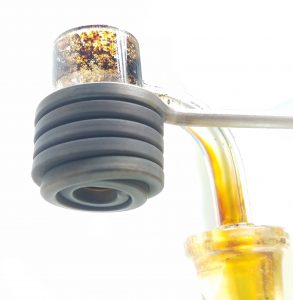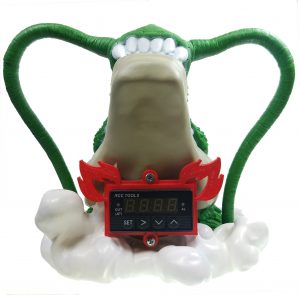How often do I need to q-tip to keep my quartz banger clean?
Keeping a quartz banger clean can be frustrating. The residue can sneak up faster than you’d think; especially if you are new to dabbing. Reclaim deposits build up quickly and can turn into persistent crust after a couple of dabs. This is why it’s important to have some handy cleaning techniques up your sleeve.
Some like to stay vigilant and qtip their nail immediately after dabbing each and every time. Some may skip it for a dab or two and are OK with a small amount of slow buildup that can be taken care of all at once at a later point. Then there are those who like to let it ride and just do a heavier cleaning with high heat or ISO every couple of weeks.
Especially for all of you procrastinators, one common technique is to keep a few quartz bangers around so that they can be rotated and soaked. Soaking can significantly loosen residue deposits and make it much easier to clean heavy crust off. However, applied heat is sometimes necessary in order to truly loosen everything up. For a heated soak combination method, check out the last method on this page.
Do I need to use isopropyl alcohol or just water to clean?
Usually I find I don’t actually need isopropyl alcohol, but it depends. If you just have light residue build up then just water and a low temp heat setting usually works great; especially on SiC. This was you save the hassle of obtaining ISO, which sometimes isn’t easy to get these days.
Just add a few drops of water to the nail and set the temperature to around 300F to where the water will just start to sizzle (but not boil). Different consistencies and qualities of concentrates tend to produce slightly different types of buildup. Dryer material or material with more wax usually leaves more residue behind compared to a more soupy dab. On the other hand, something like a #terpsoup will boil off faster with it’s higher terpene ratio. Terpenes don’t normally leave as much residue behind compared to waxes and lipids because the contain less solid content and more liquids.
Do I need to turn my controller past 1000F or torch the nail?
I’ve found that low temps work surprisingly well if the banger hasn’t gotten too crusty or if you are using SiC (which is much more forgiving than quartz or Ti). Sizzling temperatures work the best, which are usually anywhere from 250F to 350F on the controller settings. Sometimes you just have to bring out the big guns, though. Check out the video below to see a demo of bringing the water to simmering and q-tipping for an easy quick clean. If your quartz is extremely caked up with dark crust you can avoid using a torch or cranking the enail controller up by using the simple green method at bottom (courtesy of 710coils).
How Do I Use The Simple Green Method?
The Simple Green method is a more hardcore deep clean that works very well for extra dry, crusty, caked up residue buildup. The soaking takes more time than scraping alone and more attention than soaking alone. However, after a few hours your residue will become amazingly loose and easy to wipe off without scraping at all.
If you use to rely on a torch to do periodic heavy cleaning, now you can just throw them in your cleaning jar and let them sit for a few hours. The one caution I will give is that it does take a lot longer to rinse this type of cleaner off compared to isopropyl.
All you need is a mason jar or container that will fit your glass ($2 or recycled for free), a mug warmer ($5-$10 on eBay), and a bottle of Simple Green ($2). Isopropyl alcohol also may work but could be dangerous if the room is not well ventilated. Simple Green is a organic cleaner that seems pretty safe to me (although I’m not 100% on that). Isopropyl does seem much easier to rinse off later, but Simple Green is cheaper and works incredibly well for that really crusty black buildup. If hot water isn’t doing the trick, give this method a try:
1- Gently arrange all glass in the jar.
2- Pour in Simple Green to the top of the glass.
3- Make sure to dry any spills and plug in your mug/candle warmer.
4-Let sit for at least a couple of hours up to around a day
5. Rinse and repeat as necessary. Q-tip in between or gently scrape as necessary to speed up the process. Rinse well, because the Simple Green smell tends to stick around on the piece even after one or two thorough rinses.
(If you don’t have any Simple Green around you may be able to carefully vent and use ISO but please be careful not to blow anything up!)

Pro Tip:
For a “quick and dirty clean” you can remove a light residue by dropping a few drops of water or ISO in while the banger is heating up. There will be less time for the particles to loosen up in the simmering water compared to setting the e-nail to 300F, but it could take care of a significant amount on the way up to your normal temps.




